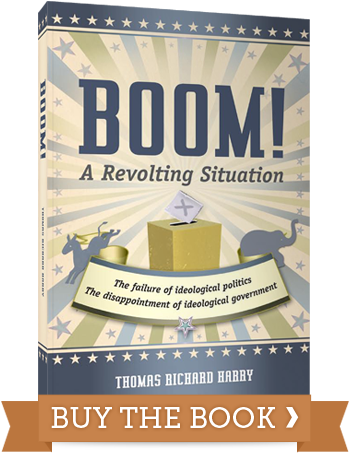What’s an assault weapon? For purposes of US gun laws and gun politics, an assault weapon is a semi-automatic firearm possessing certain features similar to those of military firearms. Semi-automatics fire one bullet each time the trigger is pulled. They have a detachable magazine, some capable of holding fifty (50) rounds. Most assault weapons are rifles, but some are pistols or shotguns. There are both state and federal regulations pertaining to assault weapons which, not surprisingly, are not always uniform in classification, restriction or application.
In today’s America there’s no apparent link between a well armed militia and the public availability of assault weapons. America hasn’t looked to or depended upon a “citizen’s militia” for well over a hundred and fifty years, at least. Today we rely upon a standing national military supplemented by semi-professional corps of States’ National Guard. To the best of my knowledge, they are not required to provide their own firearms or ammunition. Also, ponder the proposition that guns don’t kill, people do. At best that’s questionable, at worst it’s mendacious. Guns are for just one purpose: to kill, or threaten to kill, something—offensively or defensively.
Guns are a means to an end. When the ends to which guns are put are outside the bounds of society’s legality—and murder, let alone mass murder, is illegal—then those means need to be brought into question. The issue of those (persons) employing these means is likewise open for scrutiny. Either the means need to be removed, people’s access to the means effectively restricted or perhaps the laws themselves reviewed. That seems to cover the alternatives for eliminating a problem; an unacceptable but too often a recurring one involving guns as a means of achieving tragic, illegal ends.
As I have written elsewhere, the proper responsibility of government in an open liberal society is, or ought to be, to provide the greatest good for the greatest number; to promote individual and collective freedom while assuring society an environment in which to enjoy such freedoms. The preamble to our Constitution spells this latter out clearly when it says, “ . . .establish justice, insure domestic Tranquility . . . promote the general welfare, and secure the blessings of Liberty . . .” This doesn’t mean that every individual is entitled to do what he or she wants, when, where and how they might want to do it. We establish laws that set out rights and responsibilities in this connection. We expect people to obey them, for the good of all. When they don’t, they’re penalized.
In the real world there has to be this trade-off between individual freedom and collective security. There has to be rules and regulations that society, or at least a majority of society, agrees need to be followed (i.e., laws) for both individual and collective freedom and security to prevail. Absent such rules, we’re back to the law of the jungle; might makes right, and that’s the only rule that holds. The very purpose for yielding some individual “rights” to government in order for it to manage an orderly secure society is defeated.
This is not a formula for a tyranny of the majority, but a realization that (a) you can’t please all the people all the time; (b) the tail should not be allowed to wag the dog, i.e., minority “rights” should not usurp majority preference beyond the point that Constitutional provisions dictate; and (c) a public judicial philosophy of bowing to the clamor for ever increasing personal, individual rights can be consequential to the well-being (tranquility, general welfare) of society. Try not to forget that on the opposite side of rights lies responsibility. If responsibility can’t be expected, or enforced, then the worth of rights seems negligible.
I’m a long time gun owner; I still have a couple of NRA arm patches from younger days. Though not a hunter I have no problem with hunting, per se, or competitive or recreational shooting. I do, however, have a problem with repeated instances of seemingly senseless indiscriminate killing with guns, and more especially with the legality of near-automatic weapons that can only be justified for those sanctioned to kill in the hands of people who are not so sanctioned. Killing by the unsanctioned is illegal. It’s that simple. Self-defense may in some instances be a legitimate reason for gun possession, but seems poor justification for possession of military-style weapons. Ask yourself, how much different from an outlawed machine gun is a practically automatic (semi-automatic) weapon that can fire 50 rounds at a time? Because “I want one” seems scant reason to make them available to the general public. They are for killing aggressively, and killing by the unsanctioned is unacceptable in society. Why provide super-sized means to undesirable ends?
Well, a reasonable reply to this question might be tolerance. Society seems tolerant of any number of “means” that can produce bad ends: alcohol, for example, or even automobiles. True, but while their availability and unintended use can lead to unfortunate results, their purpose is not expressly to kill. No, it seems impossible to justify guns except for the purpose for which they are designed, killing.
But, is limiting the availability of certain types of firearms Constitutional? What about the Second Amendment, the right, purportedly, “to keep and bear arms,” a provision seemingly without qualification? The intent of this provision has been debated for much of our history. Today, most argue it to be a license to own and carry almost any type of firearm one desires—machine guns, however, were outlawed decades ago. Others put forth it was intended to assure that the people, as the People—a militia—retained some ability to defend themselves in the name of the State (possibly even against the State) which, as above pointed out, hasn’t been the case for a long, long time. At this point the Second Amendment seems a conflicting guide. Originally conceived as a political right, the Reconstruction Era 14th amendment converted it, practically, into a civil right. I base my argument not on this controversial “right,” while recognizing that the US Supreme Court has in two instances upheld it as a personal one. The Court—agree with it or not—needs to be respected and its verdicts upheld. But that does not mean, ipso facto, that other avenues for change or correction are preempted.
By simple definition, “arms” and “assault weapons” might today be legally classified separately for purposes of the Second Amendment, just as money and free speech need to be separated for purposes of the First Amendment. “Slippery slope” I hear gun advocates yell. Maybe; maybe not. Another possibility, limit semi-automatic guns’ magazines to what non-assault classified weapons can hold. Canada has such laws. In Canada, magazines for semi-automatic weapons are limited to five (5) rounds. Would that solve our problem? Well, it wouldn’t be perfect, but it probably doesn’t have to be to work; to achieve our goal of preventing unprovoked mass murders using guns made especially for aggressive killing by the unsanctioned.
Eliminating these means—assault weapons—to tragic ends does infringe on the unfettered freedoms of some—so do libel laws and speed limits. But the increase in the “general welfare” it offers is adequate compensation. The well-being of the whole should not be required to take second-fiddle to the individual. Over time that weakens the cohesiveness of any liberal, open society. Keep in mind that the general welfare is a Constitutional concept as well as the Second Amendment. It avoids the tail wagging the dog.
I leave unaddressed the important issue of the persons who carry out these unsanctioned killings. Why? Because in an open society trying to establish and then restrain ahead of time just who they may be seems to require a narrowing of individual liberty even more restrictive than denying “toys” to some. My approach will in all probability not totally eliminate the problem, but if nothing else, it should make it increasingly difficult for those so tempted to acquire the means to their tragic ends; that’s a big step in the right direction.
The argument is simple, but not simplistic. Certain types of aggressive, or assault, firearms have no place in a modern open society such as ours. The reason is, as I say, simple: Look at the unanticipated results: The slaughter of innocents. The easy availability of these “weapons of mass destruction” is not in the best interests of all the people, nor of even most of the people, any time. It is simply not in our collective interests to tolerate them for the benefit of a very few. We have too many examples of what these weapons can do in the wrong hands. Is that sufficient motive to prohibit them to everyone? Yes, it is, or at least should be. We can live just as long without them—some of us a lot longer.
Thomas Richard Harry
December 2012






